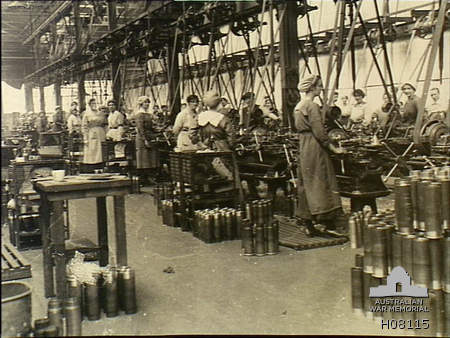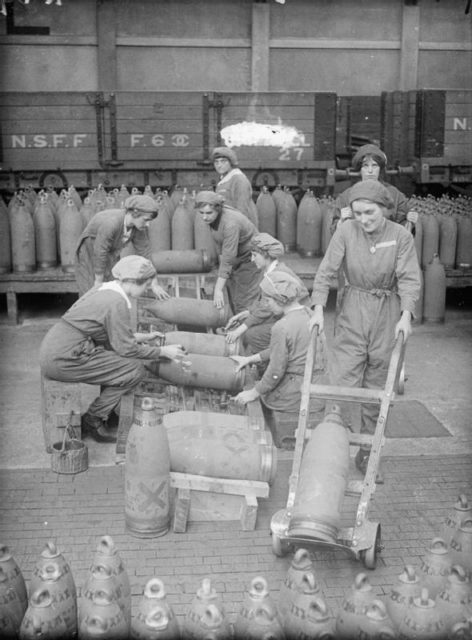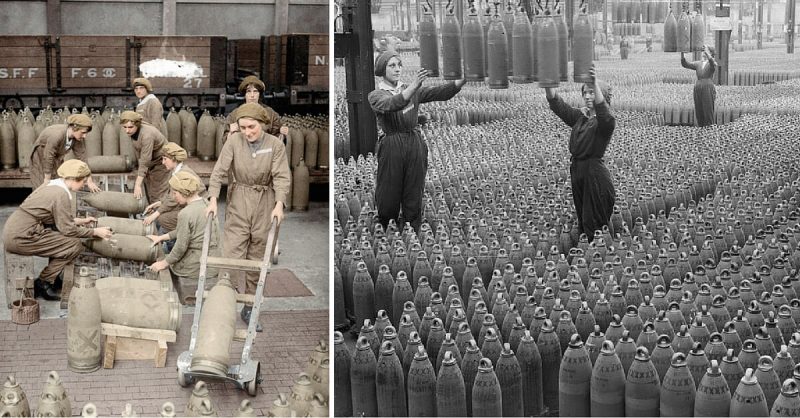The last surviving ‘Canary Babies’ have told their story of how their skin was tinged yellow after their mothers worked in explosives factories in the UK during World War One.
Gladys Sangster is now in her late 90s and is one of the oldest surviving ‘Canary Babies’ whose skin at birth was a shade of yellow.
At the time yellow babies weren’t seen as anything different since hundreds of babies were born with a yellow skin color due to the large number of women working in the munitions factories during the war.

Since most men were joining the military, women were required to fill factory jobs formerly occupied by men. The United Kingdom used slogans like ‘National Service’ or ‘Women’s Land Army’ to encourage young women to join the workforce.
The women came into direct contact with dangerous chemicals and had to pour the liquid explosives into shells before they were sealed and sent off to the army.
Gladys says that she lost her yellow color a long time ago, but recalls how many babies were born in the area where she lived.
The munitions factories employed over 1500 local people and it was not only the babies who were affected, but it was also the women themselves. They became known as the ‘Canary Girls’ since they were tinged with TNT powder.
The ingredients were be mixed by hand regardless of the fact that they were known to be a health hazard.

The women workers would suffer from hives, and their skin and hair became yellow. Some workers in factories across the UK lost their lives or limbs when explosives were accidently set off.
Gladys’s mother Mary led a team of female workers at the factory and her father, who also worked for the factory, accompanied shipments of the completed shells to the ports where they would be shipped to supply Allied troops in Europe.
At the time, doctors said that there was nothing that could be done for the discolored babies and that it would eventually fade over time. Since Gladys has already lived to the ripe old age of 98, there seem to have been no long-term health effects, for her at least.
Gladys’s story has been documented by a local war history organization and is being broadcast on local radio.
